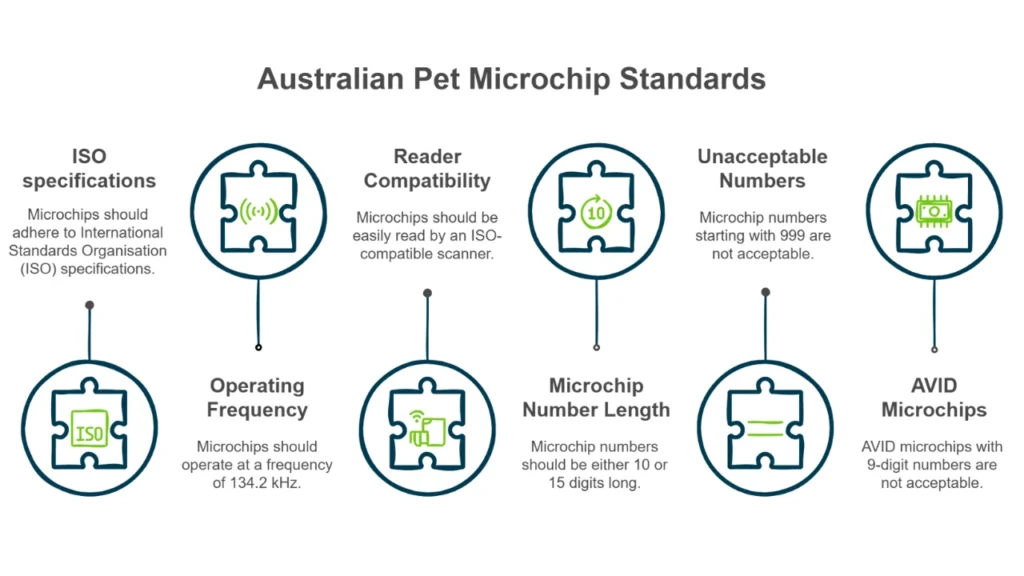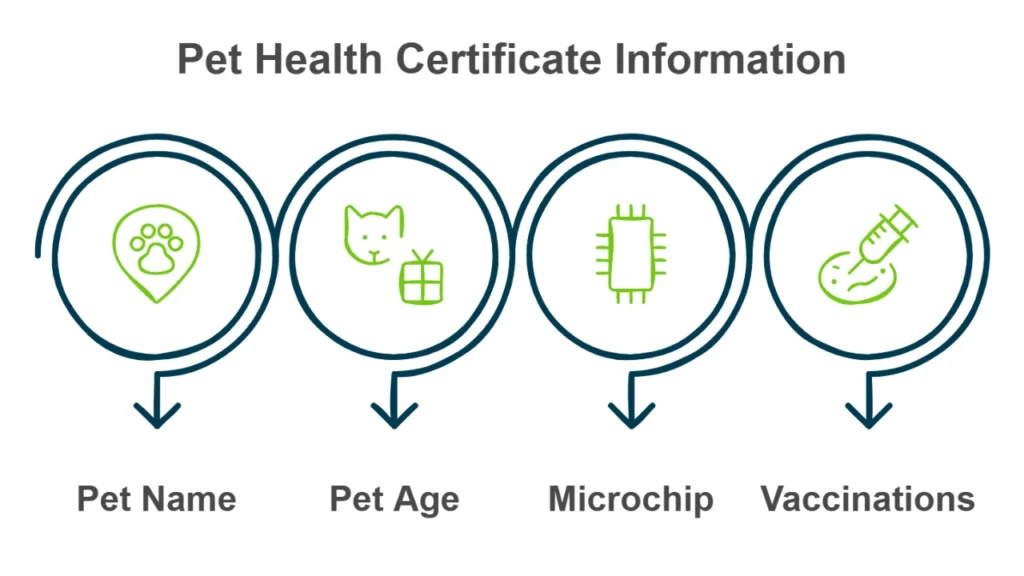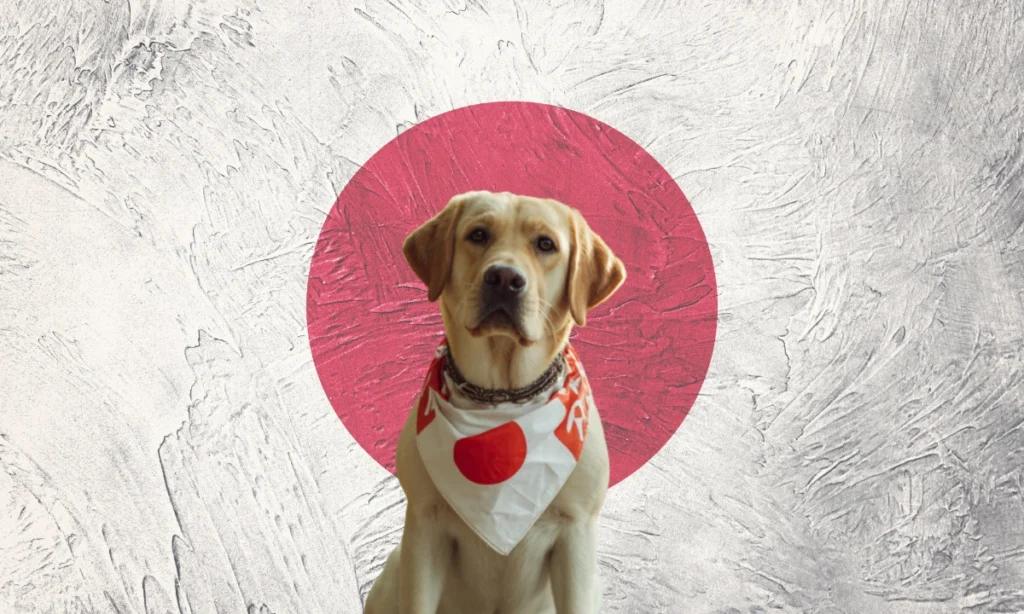Moving from the sunny shores of Australia to the beautiful landscapes of Canada is a huge life change. And of course, you don’t want to leave your furry friend behind.
We understand that bringing your pet to Canada from Australia can seem daunting. You must complete complex paperwork and follow strict regulations before travelling.
But with some help, the correct preparation and attention to detail, your beloved pet can join you on your Canadian adventure without a hitch.
The good news is this: Australia is recognised by Canada as a “rabies-free country.” This makes the import process significantly simpler than it is for pets arriving from high-risk countries.
Discover the key steps you need to follow: preparing the essential paperwork, understanding inspection procedures at the port of entry, and managing travel logistics to ensure your pet has a safe, smooth journey to their new home.
Essential Documentation (The Paperwork)
A critical step for international pet transport is getting the paperwork right. Dotting the i’s and crossing the t’s ensures your pet is allowed entry without costly delays or refusal.
This is no different when bringing your pet to Canada from Australia. Every document must be legible (in either English or French) and signed by a licensed veterinarian.
The required paperwork differs slightly for dogs and cats.
Paperwork for Dogs
Dogs entering Canada from Australia need the following documentation:
- A valid rabies vaccination certificate, OR
- A valid Rabies Country-Freedom Certificate
Rabies Vaccination Certificate for Dogs
Although Australia is a rabies-free country, Canada requires dogs to have proof of current rabies vaccination or a valid Rabies Country-Freedom Certificate. Let’s focus on the rabies vaccination certificate here.
Dogs must have been at least 3 months of age at the time of rabies vaccination for international pet travel.
The rabies vaccination certificate must:
- Be written in English or French, or be accompanied by an official translation
- Be issued and signed by a licensed veterinarian
- Identify the animal (age, breed, sex, colour/markings, weight, and microchip/tattoo number if applicable)
- Identify the owner of the dog
- State that the animal is vaccinated against rabies
- Indicate the date of rabies vaccination
- Indicate the trade name and the serial number of the licensed rabies vaccine
- Specify the period of validity of the rabies vaccination (otherwise, it will be considered valid for 1 year from the date of vaccination); and
- Have the name and signature of the licensed veterinarian who issued the certificate and the date it was signed
All information on the certificate must be legible.
Rabies Country-Freedom Certificate for Dogs
If your dog hasn’t received the rabies vaccination, the second option is to get a Rabies Country-Freedom Certificate. This certificate must:
- Be written in English or French
- Be issued on the official letterhead of the competent veterinary authority of the government of the country of origin
- Be issued and signed by an official veterinarian of the competent veterinary authority of the government of the country of origin, or issued by a licensed veterinarian designated for such purposes by the competent veterinary authority of the country of origin, and endorsed by an official veterinarian of the competent veterinary authority of the government of the country of origin
- Identify the animal (breed, sex, colour/markings, and weight, and microchip/tattoo number if applicable)
- State that the animal has been in the exporting country since birth or for at least 6 months immediately preceding the date of export to Canada; and
- State that rabies has not occurred in the country of origin for at least 6 months immediately preceding the date of export to Canada
All information on the certificate must be recorded legibly.
Paperwork for Cats
Cats entering Canada from Australia need the following documentation:
- A valid rabies vaccination certificate, OR
- A veterinary certificate
Rabies Vaccination Certificate for Cats
The rabies vaccination certificate for cats must:
- Be written in English or French
- Be issued and signed by a licensed veterinarian
- Identify the animal (age, breed, sex, colour/markings, weight, and microchip/tattoo number if applicable)
- state that the animal is vaccinated against rabies
- Indicate the date of vaccination
- Indicate the trade name and the serial number of the licensed vaccine
- Specify the duration of immunity (otherwise, it will be considered valid for 1 year from the date of vaccination)
- Have the name and signature of the licensed veterinarian who issued the certificate, and the date it was signed
All information on the certificate must be legible.
Veterinary Certificate for Cats
The veterinary certificate must:
- Be written in English or French
- Be issued on clinic letterhead
- Be issued and signed by a licensed veterinarian
- Identify the animal (age, breed, sex, colour/markings, weight, and microchip/tattoo number if applicable)
- State that the animal has been in the exporting country since birth or for at least 6 months immediately preceding shipment to Canada
Official Documentation Accompanying Vet Certificate
The vet certificate must also be accompanied by documentation from the competent government authority, stating that rabies has not occurred in the country of origin for at least 6 months immediately preceding the animal’s shipment to Canada.
- A competent government authority is a veterinary or other government agency that manages a country’s animal health and welfare situation and handles the responsibility of veterinary certification for international trade.
- The documentation can be either a letter issued on the competent government authority’s letterhead, which must be endorsed (dated, stamped, and signed) by an official of the competent government authority in the country of origin, or a letter by the licensed veterinarian who issued the certificate, which must be endorsed by the competent government authority.
All information on the certificate must be recorded legibly.
IMPORTANT: Canada is not a rabies-free country. We recommend getting your dog or cat vaccinated against rabies when travelling to Canada.
Pet Microchipping
Canada does not require a pet microchip identification for domestic dogs imported as personal pets or domestic cats.
But your pet must be microchipped to leave Australia and travel internationally. Although microchipping isn’t a requirement for entry to Canada, it’s needed for export from Australia.
- The microchip must meet ISO 11784/11785 standards, which means it’s readable by universal scanners used by border authorities worldwide.
- If your pet already has a chip, check that it’s compliant (if not, you’ll need to have a new one implanted).

Pet Health Certificate
Although a pet health certificate isn’t listed as a mandatory requirement for entry to Canada, a vet must declare that your pet is fit to fly. Think of this as a requirement for exporting your pet from Australia.
Health certificates confirm your pet’s fitness for travel and compliance with destination requirements such as vaccinations. Health certificates are often called “fit to fly” certificates.

The vet will help with:
- Health checks
- Valid microchipping
- Vaccinations (if required)
- Blood tests (if required)
- Parasite treatments
The certified vet verifies that your pet is in good health and meets all of the requirements to enter the destination country. The certificate will typically include your pet’s name, age, microchip number, and vaccination records for airlines and authorities to have on file.
A Dogtainers vet will do this final health check if you’re using our pet transport services. Our vets are experienced with this process and know exactly what paperwork is required.
If you get this check done by your regular vet, it’s vital that your vet knows the process and it’s done correctly. The paperwork can be complicated, and every document must be correct.
Any mistakes can end up being very financially costly for you.
If everything is in order, the vet will issue a Veterinary Health Certificate, which is essential for your export permit application.
We recommend booking these appointments well in advance when bringing your pet to Canada from Australia.
Arriving in Canada
The moment of truth happens at the Port of Entry (POE) in Canada, where your pet will be subject to an inspection to confirm compliance with all import requirements.
Inspection at Port of Entry (POE)
Your pet will be inspected by an official from the Canada Border Services Agency (CBSA).
The CBSA inspector’s job is to verify that the documentation is complete, legible, and matches the animal being imported. This is the Rabies Vaccination Certificate and Rabies Country-Freedom Certificate for dogs, and the Rabies Vaccination Certificate and Veterinary Certificate for cats. They a wo things: compliance with the rules and the general health of the animal.
The CBSA inspector will allow importation if your pet matches the description on the paperwork, the documentation is complete and valid, your pet appears healthy, and complies with humane transport requirements.
Note: The CBSA inspector must refer your pet to a Canadian Food Inspection Agency (CFIA) veterinarian for inspection if they appear in ill health, sick, or if there are humane transport issues.
Risk of Delays
If your pet does not meet the import requirements, the situation will be reviewed on a case-by-case basis. Depending on the case, your pet may be delayed or denied entry to Canada.
A pet transport company like Dogtainers helps to ensure a smooth and stress-free experience.
Additional Inspection Fees and Taxes
If your pet is referred to the CFIA for further inspection, additional inspection fees will apply. All fees must be paid at the time of inspection, and any applicable taxes or duties are calculated by the CBSA.
Special Considerations (Beyond Dogs and Cats)
Dogs and cats have the most straightforward import process. If you’re travelling with a different type of animal or importing for specific purposes, the rules are different.
Other Animals (Birds or Rabbits)
Rabbits:
Bringing a rabbit into Canada requires you to apply for an Import Permit at least 30 days before arrival.
Pet rabbits from Australia require an import permit, a health certificate, and quarantine in Canada. You also need to submit a complete vaccination history if your rabbit has ever been vaccinated for myxomatosis.
Birds:
The import requirements for birds are highly complex and strict due to concerns like Avian Influenza. You must apply for an Import Permit for your birds.
Once in Canada, pet birds must be quarantined for a minimum of 45 days. Birds are only released from quarantine when authorities are happy they pose no threat to Canadian birds.
Bringing Your Pet to Canada from Australia with Dogtainers
Who says moving to Canada from Australia with your pet has to be stressful? With Dogtainers, our experts help you every step of the way.
We can guide you through everything, from advising you on entry requirements to arranging vet visits. You don’t have to go through the process alone.

Our experts have been helping pet owners like you with international pet transport for over 50 years. We’re Australia’s oldest and most reliable pet transport company with:
- Vast experience
- Industry credentials
- Tailored services
- Reliable global networks
- Strong airline partnerships
- Deep regulatory knowledge
You may find our article on the 9 Benefits of Using a Pet Transport Company useful.
Conclusion
Bringing your pet from Australia to Canada is completely achievable. But the process can be complex and requires diligent preparation.
Complete, legible, and accurate paperwork is essential for a seamless entry. Double-check every single document against the requirements and use the AIRS tool on the Canadian government website for confirmation.
Or make it even easier and stress-free by hiring a professional pet transport company like Dogtainers.
Our experts know every detail about bringing your pet to Canada from Australia. We’re here to help you prepare for international pet travel and ensure all of your paperwork is 100% correct.
Planning and ensuring your documentation is perfect minimises delays at the border, avoids unexpected fees, and means your beloved pet starts their new Canadian life safely and soundly.
Get your quote today for relocating your pet from Australia to Canada.
Transporting Your Pet to Canada from Australia FAQ
How Much Does It Cost To Fly Pets To Canada?
We must consider numerous factors when quoting pet transport pricing. These include flight routes and destinations, the size and weight of your pet, the level of service requested and more. Dogtainers give you transparent quotes for our tailored pet transport services – no hidden costs or surprises. Your Dogtainers pet travel consultant will outline all of the available options, ensuring you get the best service and price for bringing your pet to Canada from Australia.
Are there inspection fees for dogs and cats arriving in Canada, and which pets are subject to them?
Yes, importing animals is subject to fees that are calculated and payable at the time of inspection. Specifically, dogs and cats that are over 8 months of age are subject to an inspection fee.
What are the potential consequences at the Port of Entry if documentation is incomplete or illegible?
If documentation is incomplete or illegible, the pet owner may incur additional fees. Your pet may also be required to get a new vaccination and undergo a period of isolation upon arrival. In the worst-case scenario, your pet may be ordered to be removed from Canada, and legal actions may be pursued.
How does Australia’s classification as a rabies-free country simplify pet entry into Canada?
Australia’s status as a rabies-free country makes the import process significantly simpler than it is for pets from high-risk countries. This classification means your pet typically avoids the complex and time-consuming requirements associated with high-risk countries, such as mandatory blood titer tests (RNATT) or long quarantine periods.





Share this article